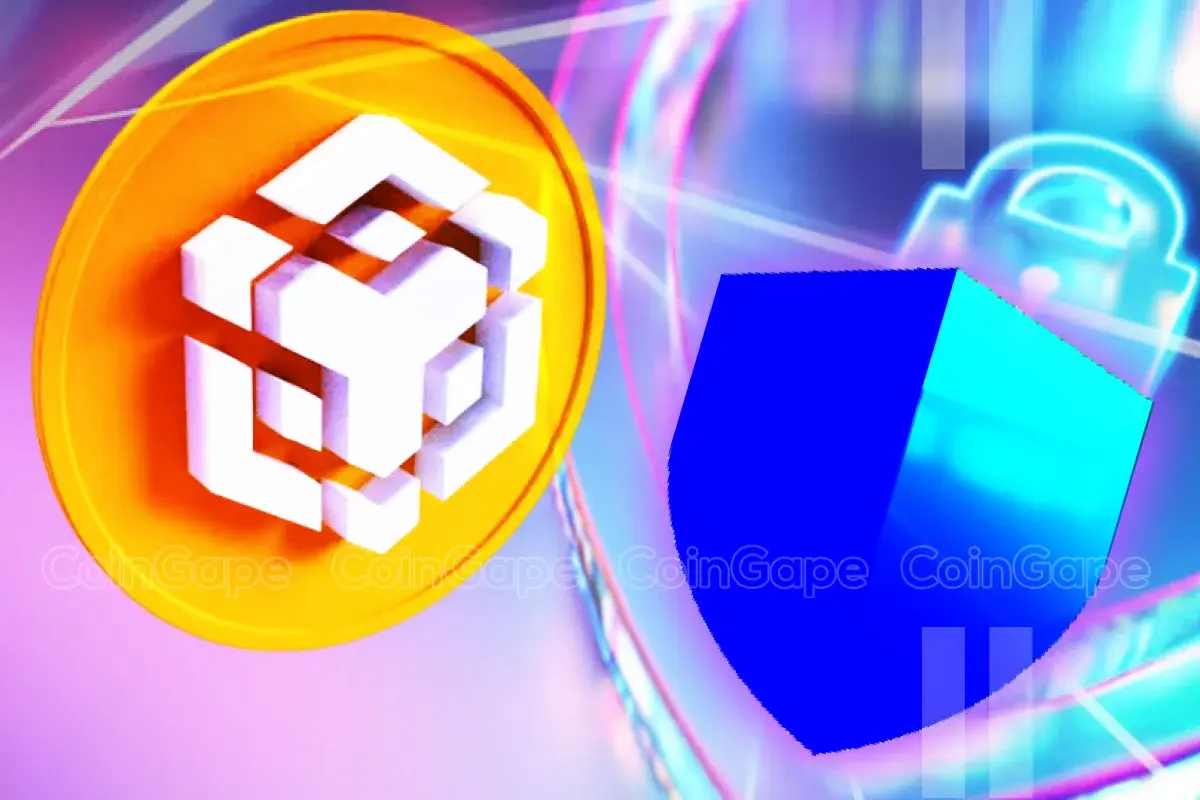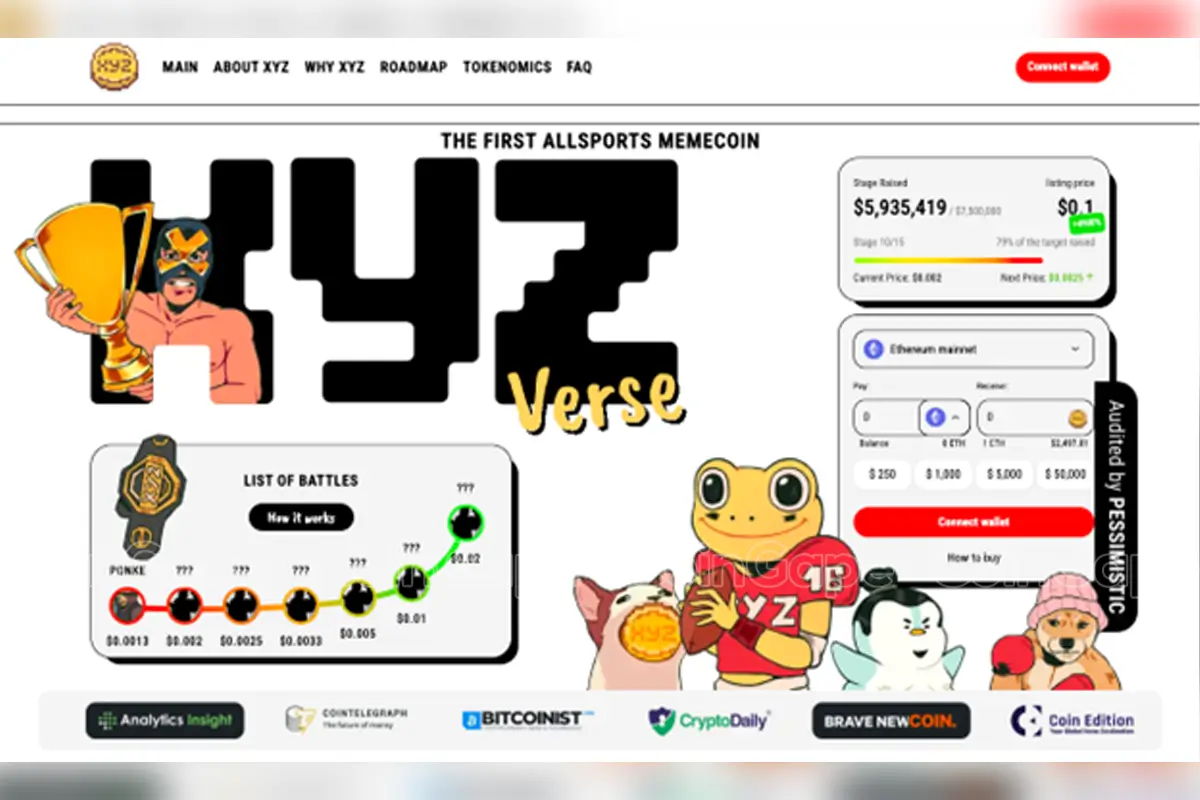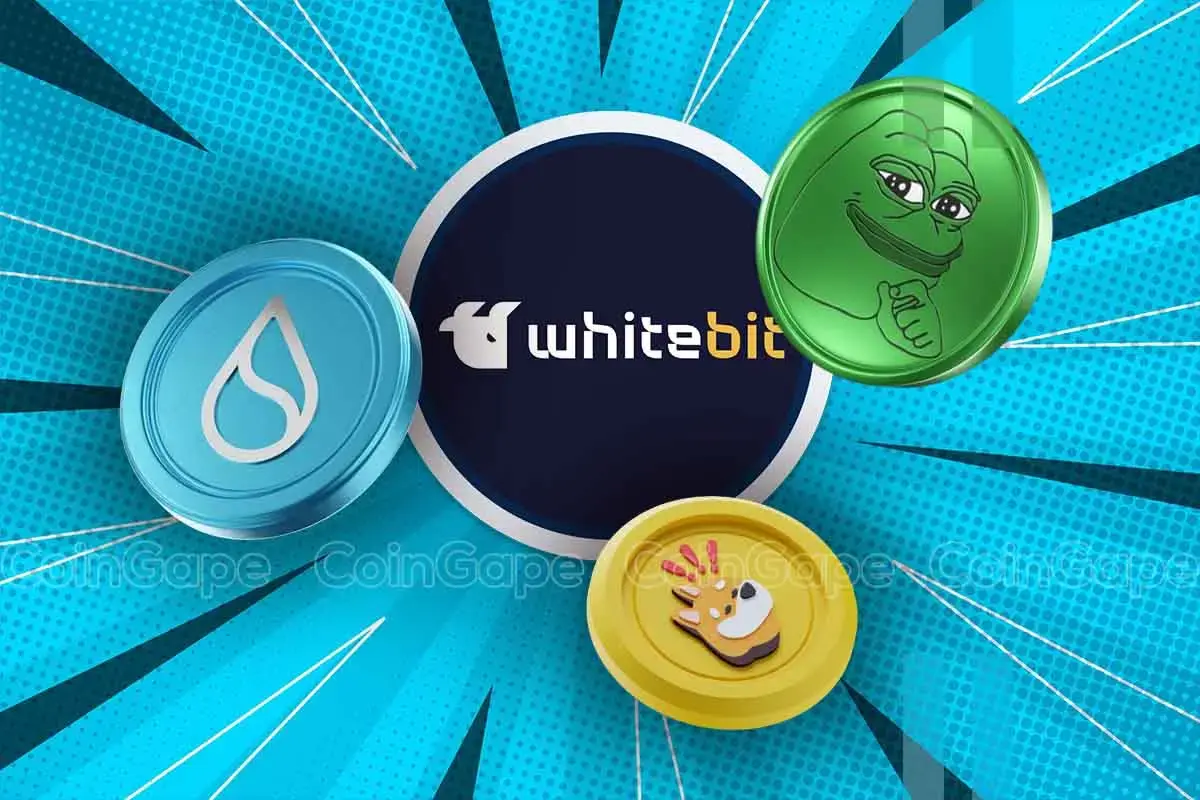blog
Insights from Trust Wallet and BNB Chain on Crypto Wallet Security
Published
4 months agoon
By
admin
Security of tokens should be the number one priority of all crypto users. Recent incidents such as the DEXX security incident where at least $21 million worth of user funds was lost, are evidence of the inherent risks of the crypto world. In this scenario, attackers compromised over 1000 users by simply taking advantage of the existing shortcomings of the platform’s private key management.
The One Golden Rule of Crypto: Not Your Keys, Not Your Coins
Begin by choosing the right wallet and using the best security practices on offer. There are two types of crypto wallets – Hot wallets, which have internet connectivity and cold wallets, which are stored offline. Apart from these two, there are smart contract wallets which can be programmed.
Now let’s examine BNB Chain and Trust Wallet’s opinion on crypto wallet safety and how users can make informed decisions based on them.
Lessons learnt from the DEXX security Issue.
Before we dive into what crypto wallet security implies, it is necessary that we understand more about the recent security incident mentioned before.
DEXX, which is a reputed on-chain trading terminal platform, experienced an attack on November 16th, 2024, which primarily affected Solana funds. As a result of this attack over $21 million worth of user funds were lost, with about 1000 victim addresses.
The community is concerned after finding out that more than 9000 unauthorized transactions were used in the attack. Subsequent investigations into several compromised addresses found out that the stolen funds remain in the hacker’s possession. This points to the fact that a single offender perpetrated the incident.
The root cause of the incident was identified as vulnerability in the private key storage of the platform’s server. The API for exporting wallets from DEXX returned private, unencrypted keys. This reveals that DEXX stored private keys on its servers. All this, despite branding itself as a non-custodial wallet – what an irony.
Several measures can be taken to prevent this sort of breach.
- Avoiding Storage of Private Keys: Private keys should never have been stored on DEXX’s servers, as this practice directly contradicts its non-custodial claims.
- Encryption: Sensitive data should be encrypted during transmission and storage to protect delicate user information.
- Regular Security Audits: Regular security audits should have been conducted to identify vulnerabilities before they were exploited.
Checking whether selected wallets have gone through proper audits is key for users. When investing a substantial amount of funds, it’s better to choose reputed and time-tested platforms to decrease the chances of loss.
What to Look for in a Secure Wallet?
Consider the following features when looking for a secure cryptocurrency wallet.
Secure Key Management
Reliable wallets should commit to secure key management. They should ensure that all private keys are generated, stored and managed in the most secure manner possible. Some of the key aspects of secure key management include:
Backup and Recovery: Users should be provided with secure backup options. They should also have the ability to recover private keys or seed phrases when needed.
Seed Phrase Encryption: Ensure that the wallet has strong encryption measures for seed phrases.
Non-custodial design: Go for wallets that do not store their private keys on centralized servers. User should have full control over their private keys.
Wallet History and Security Licenses
Selecting a secure wallet is undoubtedly the most challenging thing a new Web3 user has to do. Many users face difficulties in determining whether a wallet is secure and follows the best practices and protocols.
With that being said, follow these steps to choose a secure wallet.
- Begin by checking the past records of the wallet and opting for one with a proven history and good reputation. These are likely to follow strict security protocols.
- Check whether the wallet has passed multiple audits and holds a valid security license.
Follow these above steps to make informed decisions.
Security Scanners and Alerts
Users seldom understand the full implication of a transaction when performing them or exploring dApps. When receiving a given message or prompted transaction from a dApp, it requires a lot of trust from the user’s end. Why? – because its almost impossible to know the full extent of the transaction’s consequences, just by looking at the on-screen prompt.
Fortunately, Trust Wallet’s Security Scanner feature solves this problem. This feature is responsible for analyzing transactions and identifying suspicious patterns, even before the funds are sent. This reduces the chances of users accepting or signing fraudulent or unwanted transactions. This feature alone has safeguarded $450 million from being stolen.
Wallets with this feature simulate the transaction. They then provide the results to the users instead of just displaying the message or the transaction the DApp requests. This ensures that the client’s action is the same as their expectations.
Crypto wallets are known as the gateway to interacting with dApps. But since the users do not fully understand the imitations of transactions, the security scanner feature should be used.
Step-by-Step Guide for Choosing a Wallet
The main tool for interacting with the crypto ecosystem is the crypto wallet. It functions as the gateway to dApps and blockchain networks. This makes choosing the right wallet very important, even if one is trying to play blockchain games as opposed to storing assets or executing transactions.
Before you select a wallet, ask these questions to yourself.
- Do you want to hold assets long-term or are you simply a day trader?
- What is the maximum amount of risk you can take?
- Do you want to engage with dApps, or do you need basic storage or transaction capabilities?
Crypto Wallet Types
Crypto wallets can come in two forms – software wallets and hardware wallets.
Software wallets have to be accessed using smartphones, browsers or computers. Users can conveniently connect with Web3 decentralized applications or get access to their digital assets simply by clicking.
This feature makes them popular among crypto traders. The main advantage of software wallets is the level of functionality and immediate accessibility they provide. They are versatile, capable of connecting to dApps seamlessly and be used for use cases such as crypto payments and digital IDs.
A good example of a software wallet is Trust Wallet. It is compatible with both desktops and mobile devices.
When using a hot wallet on your PC or mobile, it’s crucial to install antivirus software for malware protection to ensure the security of your personal computer or phone. Hardware wallets on the other hand are physical devices used to store private keys in an offline environment. They are considered the safest option for crypto management and storage for this reason. It stores private keys away from internet connectivity.
Hardware wallets are ideal for users who prefer an extra layer of physical security or wish to store their crypto assets without frequent transactions. They are also suited for those who like to store their crypto long-term. However, the trade-off is not convenient, as things like transaction execution can take longer.
Can hardware and software wallets be used simultaneously?
It is possible to use hardware and software wallets at the same time. You can connect Ledger, which is a hardware wallet to Trust Wallet’s( software wallet) browser extension feature.
Are smart contract wallets safe?
Smart contract wallets use smart contracts that can function as wallets and provide features such as signature validation, asset ownership, and execution. Most use the ERC-4337 industry standard to develop a smart contract wallet even though other methods exist.
Smart contract wallets can bolster security and usability compared to traditional wallets. With smart contract wallets, users can get multi-owner accounts, flexible key management, token gas payments, account recovery, batch transactions, and advanced UX with security audits.
Conclusion
The world of cryptocurrency has both potential rewards and inherent risks. The key here is to stay informed and secure. Prioritize security by choosing wallets that can provide the above-mentioned features. Remember, it’s essential to make well-informed decisions and understand your needs before you choose a particular type of wallet.
Lastly, security is a personal thing. Stay vigilant, avoid sharing personal information and use different storage methods.
Source link
You may like


XRP Price Reversal Toward $3.5 In The Works With Short And Long-Term Targets Revealed


Former New York governor advised OKX over $505M federal probe: Report


First Digital USD (FDUSD) Depegs After Justin Sun Alleges Firm Is ‘Insolvent’ and Not Fulfilling Redemptions


Gen Z’s Bitcoin Bet, The Largest Wealth Transfer In History?


Trump’s Crypto Conflicts Dominate Stablecoin Legislation Debate


First Digital denies allegations, threatens legal action
blog
More is Less: Feature Fatigue is Driving Web3 Users Away
Published
1 week agoon
March 24, 2025By
admin
Prominent Web3 platforms have attempted to be all things to all people, including Decentraland, The Sandbox, and Theta. Unfortunately, the bloated experiences that resulted from their well-intentioned integration of DeFi, NFTs, DAOs, and gaming confused users and reduced interest. Originally promoted as a metaverse for social, gaming, and virtual real estate experiences, Decentraland’s attempt to integrate play-to-earn, DAOs, and NFTs led to a convoluted and slow user interface.
In a similar vein, the Sandbox attempted to integrate social interactions, NFT-based assets, play-to-earn gaming, and land ownership. Although it was successful in creating hype, the technological complexity and learning curve made it unaffordable for the general public.
When NFTs, staking, and edge computing were added, Theta’s original goal of decentralized video streaming was abandoned.
Although Steemit presented the novel idea of a blockchain-based social media platform, users were eventually overwhelmed by its intricate staking procedures and curation incentives.
Flow was intended by Dapper Labs to be a one-stop shop for decentralized apps (DApps), gaming, and NFTs. But developer uptake was poor, and the environment was disjointed.
The “Ethereum killer” EOS, which attempted to support DeFi, DApps, and other things, is the last example. Although it had some success, its governance mechanism was still difficult to operate, and staking made it difficult to manage resources like CPU and RAM.
Where did they go wrong?
These platforms were characterized by poor user experiences and interfaces, a steep learning curve, excessive features, an unsuccessful attempt to offer an all-in-one Web3 solution or a combination of these downsides. Trying to be a marketplace, a game, a DAO, and a DeFi hub at once leads to scattered focus. Overly complex interfaces make engagement difficult, and mainstream users tend to struggle with concepts like staking, governance, and tokenomics. Web3 platforms that succeed hone in on a single, well-defined use case before expanding. They are full-featured, robust solutions that focus on a specific problem.
A mission to simplify and improve user experience
SONEX, an AI-powered decentralized exchange hub, was founded to simplify and improve users’ experience with top DeFi, making the segment more accessible across ecosystems. SONEX optimizes AI integration and provides automated trading and predictive analytics, giving users a more effective and potentially lucrative trading experience.
With cross-chain integration, flexible solutions, and a ZK coprocessor, it achieves its goal. The modular solutions are designed for developers, guaranteeing uptake, while the coprocessor improves DeFi smart contract hooks for security, performance, and scalability. With data-driven insights, AI-driven strategies will maximize return and capital efficiency. By combining multichain assets with ease, SONEX strengthens its standing as a cutting-edge DeFi aggregator and fosters innovation.
Beyond fulfilling its main purpose, SONEX’s status as the AI-powered DeFi hub on Sony’s Soneium blockchain allows it to benefit from the conglomerate’s vast resources, global presence, and technical expertise. Soneium has been dubbed “the entertainment blockchain” and combines blockchain tech with Sony’s entertainment portfolio to create more demand and markets for DeFi services. SONEX combines DeFi and GameFi, enabling users to trade digital assets while enjoying blockchain games, and the hub also hopes to become the leading memecoin launchpad on Soneium.
Addressing complexity, security, and regulatory uncertainty
While some Web3 platforms have done well for themselves, mass adoption of Web3 technologies will largely remain an uphill battle. Blockchain, as a super-complex technology, undergirds Web3. Cryptocurrency, smart contracts, and digital wallets are concepts that are not unfamiliar anymore, so they remain somewhat intimidating. This complexity spills over into the UI. In Web2, you just buy something online with a few clicks and your credit card information. In Web3, you buy cryptocurrency, load it on a digital wallet, and manage it there. That whole process is something only a highly tech-savvy person would be able to pull off.
Uncertainties in regulation deter companies from investing in the adoption of Web3 technologies, as they fear change or complexity in law. Cryptocurrencies are at the center of any transaction in Web3, but with extreme volatility, they come with price fluctuations that have deterred many from using them. According to analysts, Trump has announced the intention of establishing a strategic government-backed crypto reserve to facilitate more effective regulation, thereby stabilizing the market rather than damaging it recently. This stability might be extended to crypto prices, as well.a
Security remains a concern. The FBI recently accused North Korean-linked hackers of stealing Ethereum worth $1.5 billion from Dubai-based exchange Bybit. The theft was perpetrated by distributing cryptocurrency trading apps infected with malware.
In a changing world of cyber threats, effective protection of digital assets requires the secure communication solution. Decentralized backup systems, which do not use mnemonics instead of phone number or email for authentication. End-to-end encryption ensures full security and privacy, preventing third-party access, including the security solution itself. Centralized systems hold undeniably sensitive content that removes the possibility of abuse and secures it from another centralized platform’s surveillance. Thus, all third parties are kept from accessing the content within the encrypted layer, including the security solution itself.
Further, cryptocurrencies require different wallets, setting up a barrier to interactivity across ecosystems. Shared communication and common environment that allow interoperability are given by Polkadot and Cosmos. The development of interoperability enhances scale efficiency across systems, as many blockchains struggle with scale. Low scalability is majorly limiting for any technology aiming toward mass adoption, as it severely restricts the performance when handling high volumes of transactions. Thus, it is expected that the drop of transaction fees with Layer-2 integration like Soneium will open the availability of network use to more projects and ordinary users.
According to a survey by Deloitte, 86% of senior executives believe blockchains are broadly scalable and will eventually go mainstream. Private and consortium blockchains are currently more scalable than public ones. The scalability of PBFT-based (Practical Byzantine Fault Tolerance) blockchains is limited, while those utilizing delegated PoS enable scalable governance. Operators can simulate high-volume transactions (e.g., over 10,000) using Hyperledger Caliper or a similar tool to assess scalability.
Source link

With the presale still underway, XYZVerse has already sold out 9 out of its 15 stages and raised over $6 million – covering 79% of its presale token allocation. The project has also landed on CoinMarketCap in December, which brought it even more visibility and provided easier access to price tracking and updates.
XYZVerse has more than 30,000 followers on X and over 15,000 subscribers on Telegram. On top of that, it successfully passed an audit by Pessimistic, achieving 31 out of 31 security checks, and also has partnerships with major companies like Polygon Studios.
XYZVerse’s momentum is undeniable, yet skepticism about its legitimacy remains, with some accusing it of being a scam. The crypto space has a history of scams, from Squid Game token collapses to fake DeFi projects, prompting investors to thoroughly vet every new project before committing. Interestingly enough, even Ethereum, the top platform for decentralized applications, faced early skepticism and accusations of being a fraud. So, these kinds of allegations are nothing out of the ordinary – most new projects, like XYZVerse, have to deal with them.
Based on a surface look, XYZVerse appears to be far from a scam and the claims appear to be a victim of FUD (Fear, Uncertainty, Doubt). But we will not get ahead of ourselves and assume this is right without doing our own research. So to separate speculation from reality, let’s dive deeper and dissect the facts.
What Is XYZVerse?
XYZVerse’s goal is to create a “memeverse” where sports fans engage through play-to-earn games, governance voting, and NFT collectibles. It’s native token, XYZ, is a sports-themed meme coin built on Polygon, blending gaming, sports, and crypto.
XYZVerse connects two big cultural trends here. First, it gets involved with sports fans by teaming up with MMA leagues and eSports teams. Second, it brings back memories of early meme coins like Dogecoin, but with extra utility for users. One of the project’s mascots is a strong frog in a jersey, representing its theme of going from an underdog to a champion.
For example, many in the crypto community compare XYZ to Chiliz (CHZ), a sports-focused cryptocurrency that surged 1,200% during bull markets. This suggests that XYZVerse could similarly attract a significant level of interest from the crypto-sports community.
Fact-Checking the Allegations Against XYZVerse
XYZVerse’s critics highlight three red flags:
- Hype-driven marketing,
- An anonymous team,
- Unproven utility of the XYZ token,
So let’s see what’s the truth here based on the facts that we have found.
| Allegation | Fact Check |
| Allegation 1: XYZVerse’s overhyped marketing creates FOMO to lure investors. | XYZVerse’s clever marketing is centered on showcasing its features and future plans, giving investors clear insights into the potential value of the XYZ coin. While there’s some hype, the goal isn’t merely to create excitement but to ensure the community truly understands the project. Moreover, FOMO isn’t necessarily a bad thing – it’s a natural part of any multi-stage presale that highlights the benefits of getting in early and the potential rewards that come with it. |
| Allegation 2: The XYZVerse team is anonymous, making it untrustworthy. | Anonymity is common in the crypto world, and many reputable projects much larger than XYZVerse operate this way. Even the creator of Bitcoin himself, Satoshi Nakamoto is still anonymous up to this day. So what really matters is that XYZVerse’s technology, roadmap, and token details are clear and well-documented. |
| Allegation 3: The XYZ token has no real utility beyond speculation. | XYZ token fuels transactions, powers staking for rewards (a feature most meme coins lack), and drives governance decisions. Unlike typical meme coins that offer little more than buzz, the XYZ token delivers value with tangible benefits and a solid foundation. |
XYZVerse’s Whitepaper, Tokenomics, and Roadmap
A common warning sign in the crypto world is when projects don’t have clear and easy-to-understand documentation. Scam projects often skip publishing whitepapers or details about their tokenomics, relying instead on hype and vague promises. However, from the beginning, XYZVerse has focused on being transparent. It has published a whitepaper, with a well-organized tokenomics model and a detailed roadmap. These documents aren’t just for show; they provide a clear path for the project’s long-term vision and demonstrate its legitimacy, as well as the team’s commitment.
Tokenomics
XYZ token’s allocation is really well-thought-out, designed to keep the project growing steadily and staying stable. Among other initiatives, the team will set aside 25% for liquidity and incentives like airdrops to support future listings and extra income opportunities. Plus, with a 17.13% deflationary burn, the total supply will shrink over time, helping boost the token’s long-term value.


Source: XYZVerse
Roadmap
XYZVerse’s roadmap is straightforward and practical; it’s a detailed action plan with specific timelines. Covering the years 2023 to 2025, it outlines important milestones in manageable phases:


Source: XYZVerse
This phased approach promotes accountability. Each milestone is linked to specific goals, which reduces the chance of “roadmap drift,” where projects often delay or fail to meet their promises. For example, the P2E games planned for Q2 2025 are already being tested with select community members, as mentioned in recent Ask Me Anything (AMA) sessions.
By offering interactive participation similar to prediction markets among other things, XYZVerse can tap into a massive Web2 audience, think millions of sports fans, and has the potential to become the next Polymarket, unlocking new revenue streams for the ecosystem and rewarding early presale investors.
Polymarket demonstrated record-breaking success during the 2024 U.S. presidential election period, with trading volumes exceeding $3 billion dollars and dynamic odds that swung dramatically in real time. Its prediction market model not only provided rapid, transparent insights into the political race but also highlighted a model that projects like XYZVerse can emulate, especially if they blend it with engaging P2E mechanics.
Audits and Security Checks
Scams usually don’t pass third-party audits. However, as already mentioned, XYZVerse went through a thorough review by Pessimistic. The audit found:
- No Vulnerabilities in Smart Contracts: Pessimistic confirmed that XYZVerse’s code has no serious flaws or hidden backdoors. This is uncommon in meme coins, where rushed development can lead to security issues.
- Multi-Signature Wallets for Treasury Funds: The treasury, which holds presale funds and revenue, requires multiple authorized signatures to access. This reduces the risk of a single point of failure, making sure that no one person can withdraw funds on their own.
- Non-Upgradable Code: Unlike some projects that can change their contracts after launch (a tactic sometimes used in scams), XYZVerse’s smart contracts are fixed. Once they are deployed, even the developers cannot change the core functions, which protects investors from unexpected changes.
Even credible crypto aggregators, including CoinCodex, CoinCarp, and CoinSniper have added the token to their lists, underscoring its legitimacy since these platforms are highly selective about the assets they feature.


Source: Pessimistic
Having clear tokenomics, a detailed roadmap, and passing the Pessimistic audit is important, but it’s also important to consider how the market has reacted to the project. Let’s take a look at the community aspects of XYZVerse and how it has been discussed in the media.
Social Media Presence
XYZVerse has been very active in engaging its community. The project has run various initiatives, like meme contests, airdrops, and AMA sessions, which encourage community participation and excitement. These activities not only keep current supporters engaged but also attract new users who want to learn more about XYZVerse.
Media Coverage
Some of the most reputable media outlets that have expressed their willingness to collaborate with XYZVerse include Brave New Coin, Finbold, Bitcoinist, crypto.news, Crypto Daily, Coinspeaker, and more.
Website Revamp
XYZVerse has recently announced a fresh website design, intended to deliver a better, interactive, and pleasant experience for anyone interacting with the project for the first time. Typically, scam presales do not invest significant money or effort into creating polished websites and narratives.


Source: X
This actually demonstrates the team’s commitment to their idea: they are not simply treading water, waiting for the presale to conclude. They are evolving and taking every aspect of their project seriously.
Final Verdict: Is XYZVerse a Scam?
When evaluating XYZVerse, it’s important to weigh both the positives and negatives.
The positives include:



On the downside:


Conclusion: Don’t Let Fear Cloud Your Judgment
While no investment in crypto is entirely risk-free, labeling XYZVerse as a scam overlooks its many strengths, such as its audits, clear roadmap, and active community.
As skeptics wait for clear evidence of success, XYZVerse is busy building its platform and is just about to start rolling out updates in the near future.
Source link
blog
WhiteBIT Adds Pepe, Bonk, Sui & 57 New Crypto to Expand Collateral Options to 80
Published
3 months agoon
December 26, 2024By
admin
WhiteBIT, a leading European cryptocurrency exchange has significantly expanded its collateral offerings by adding 60 new cryptocurrencies. This raised the total number of collateral assets supported to over 80 and added more versatility to the trading platform. Amongst those newly included assets were the likes of PEPE, BONK, SUI, DAI, AAVE, and many more, allowing access to numerous strategies touching borrow, margin, and futures trading.
With the expansion, it looks to focus on remaining relevant in the changing cryptocurrency market. The exchange boasts up to 5.5 million users and brands itself as a one-stop solution for retail and institutional traders. Moreover, through expansion and offering an expanded range of collateral assets on the platform, it seeks to enhance the user’s ability to risk manage while using many other trading strategies.
WhiteBIT Expands Collateral Offering with 60 New Cryptocurrencies
WhiteBIT’s expansion in offerings is largely driven by the growing demand for such features within the industry as noted by the company. With the new additions, It supports more than 80 collaterals, allowing users to choose a variety of assets for their margin and futures trading. This further highlights the increasing demand for the assets including PEPE, BONK, SUI, DAI, AAVE, as well as many others.
While other traders like the niche collaterals of newer tokens that are in contrast to major leans on trading such as bitcoin and Ethereum, such flexibility WhiteBIT is propagating this through its extension. When it tosses these assets into its system, then WhiteBIT has expanded platform capabilities that enable different types of trading. With new opportunities coming in, users can now use tokens such as PEPE or BONK for more questionable trades or for stablecoins like DAI to encrypt trade in case of fluctuating prices.
The focus on bringing in these new collateral assets points to the ability of this exchange to adapt and innovate in a competitive surrounding. The exchange is based on the customer-focused approach which allows both retail clients as well as institutional customers getting access to many advanced trading features that require greater liquidity, such as leveraged trades and margin loans from a very limited number of tokens.
The Growing Importance of Collateral in Cryptocurrency Trading
The fact that there are more than 80 assets integrated as collateral on WhiteBIT shows how important this collateral is in our cryptocurrency exchange era. The key benefit that WhiteBIT will benefit from is the opportunity to provide users with options that would best fit their risk profiles by using different assets. This is largely due to the use of collaterals in margin, futures trading, and other activities through leveraging cryptocurrency ownership as a crucial aspect of the ecosystem.
Currently, with a new type of collateral framework introduced in WhiteBIT, users can now diversify their risk on a relatively wider range of assets instead of basing it on a few. Additionally, the system allows immediate marking to market of collateral that helps traders keep track of their open positions in case their trades were liquidated. This comes in especially handy where prices become very volatile and change promptly.
The increase in collateral that is provided over the counter exchange is a strategy that more and more of the cryptocurrency exchanges are adopting as they seek to improve their platforms and reach more people. By allowing several collaterals, WhiteBIT becomes a simple exchange that meets the needs of both first-time traders and those relatively familiar with trading.
Additionally, 60 new assets can be used for crypto lending, unlocking new opportunities for those looking to invest and earn income effectively. Crypto Lending allows you to lend your cryptocurrencies to WhiteBIT by selecting a flexible plan of 30, 90, 180, or 360 days. It offers the opportunity to earn up to 13.49% annual income in the same cryptocurrency you lend. This unique tool is ideal for crypto traders seeking to grow their assets with minimal risk.
WhiteBIT Spot and Futures Trading Volumes, and WBT Token Performance
WhiteBIT has become the first cryptocurrency exchange to obtain a Level 3 certification under the Cryptocurrency Security Standard (CCSS). It continues to perform strongly in both spot and futures trading markets. The platform’s spot trading volume has surpassed $6.1 billion in the last 24 hours, reflecting its prominence in the European cryptocurrency market. This robust volume is fueled by the recent expansion of collateral options, attracting a wide range of traders.
Apart from spot trading, WhiteBIT’s future market has also been quite active as it has registered over $17.2 billion in trading volume in the last 24 hours. The exchange also provides 181 futures contracts and this makes it easy for traders who wish to take up leveraged positions and apply more intricate strategies.
Meanwhile, its native token WBT price has maintained a solid performance. Trading at $25, WBT experienced a slight 1% dip in the last 24 hours. Despite this, the token boasts a market cap of $2.17 billion and remains a key component of its ecosystem. The combination of strong trading volumes and WBT’s steady performance reinforces its status as a leading platform for both retail and institutional traders.
Source link

XRP Price Reversal Toward $3.5 In The Works With Short And Long-Term Targets Revealed

Former New York governor advised OKX over $505M federal probe: Report

First Digital USD (FDUSD) Depegs After Justin Sun Alleges Firm Is ‘Insolvent’ and Not Fulfilling Redemptions

Gen Z’s Bitcoin Bet, The Largest Wealth Transfer In History?

Trump’s Crypto Conflicts Dominate Stablecoin Legislation Debate

First Digital denies allegations, threatens legal action

Crypto Firm Galaxy Secures UK FCA Approval for License to Expand Derivatives Trading

Why Is The Bitcoin Price Surging Today?

Cardano Founder Reveals What Will Onboard 3 Billion New Users Into Crypto

Sentient open-source AI search outperforms GPT-4o and Perplexity

Memecoin Collapse Creates Perfect Moment for TradFi To Launch ‘Trusted Assets,’ According to Chris Burniske

Breez Announces Launch Of New Wallet, Misty Breez

Alabama, Minnesota Advance Bitcoin Reserve Plans With Companion Bills

Bitfarms secures $300m loan to fuel AI and data center growth

Crypto Hackers Stole $1.67B in Q1, a 300% Rise From Previous Quarter: CertiK

Arthur Hayes, Murad’s Prediction For Meme Coins, AI & DeFi Coins For 2025

Expert Sees Bitcoin Dipping To $50K While Bullish Signs Persist

Aptos Leverages Chainlink To Enhance Scalability and Data Access

Bitcoin Could Rally to $80,000 on the Eve of US Elections

Sonic Now ‘Golden Standard’ of Layer-2s After Scaling Transactions to 16,000+ per Second, Says Andre Cronje

Crypto’s Big Trump Gamble Is Risky

Institutional Investors Go All In on Crypto as 57% Plan to Boost Allocations as Bull Run Heats Up, Sygnum Survey Reveals

Ripple-SEC Case Ends, But These 3 Rivals Could Jump 500x

Has The Bitcoin Price Already Peaked?

A16z-backed Espresso announces mainnet launch of core product

Xmas Altcoin Rally Insights by BNM Agent I

Blockchain groups challenge new broker reporting rule

The Future of Bitcoin: Scaling, Institutional Adoption, and Strategic Reserves with Rich Rines

Trump’s Coin Is About As Revolutionary As OneCoin

Is $200,000 a Realistic Bitcoin Price Target for This Cycle?
Trending

 24/7 Cryptocurrency News5 months ago
24/7 Cryptocurrency News5 months agoArthur Hayes, Murad’s Prediction For Meme Coins, AI & DeFi Coins For 2025

 Bitcoin3 months ago
Bitcoin3 months agoExpert Sees Bitcoin Dipping To $50K While Bullish Signs Persist

 24/7 Cryptocurrency News3 months ago
24/7 Cryptocurrency News3 months agoAptos Leverages Chainlink To Enhance Scalability and Data Access

 Bitcoin5 months ago
Bitcoin5 months agoBitcoin Could Rally to $80,000 on the Eve of US Elections

 Altcoins2 months ago
Altcoins2 months agoSonic Now ‘Golden Standard’ of Layer-2s After Scaling Transactions to 16,000+ per Second, Says Andre Cronje

 Opinion5 months ago
Opinion5 months agoCrypto’s Big Trump Gamble Is Risky

 Bitcoin5 months ago
Bitcoin5 months agoInstitutional Investors Go All In on Crypto as 57% Plan to Boost Allocations as Bull Run Heats Up, Sygnum Survey Reveals

 Price analysis5 months ago
Price analysis5 months agoRipple-SEC Case Ends, But These 3 Rivals Could Jump 500x


